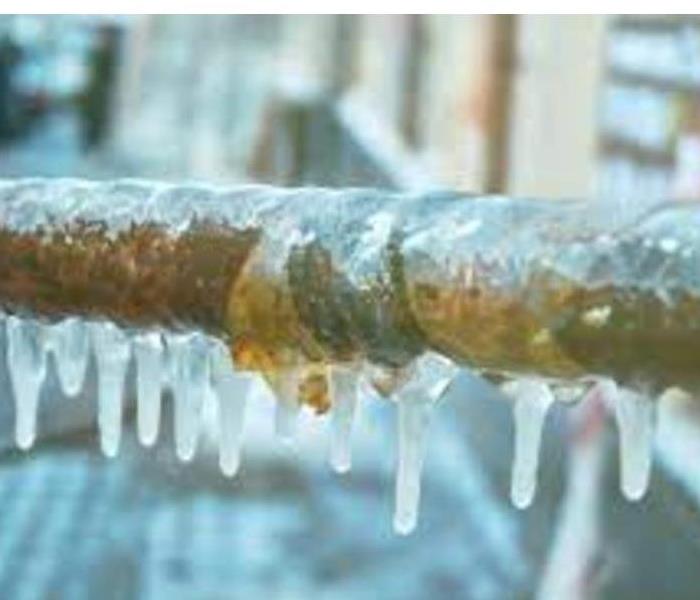Keep Pipes from Freezing
9/15/2022 (Permalink)
How to Prevent Pipes from Freezing
With a few simple tips and tricks, frozen pipe prevention isn’t very difficult. First you must identify any pipes that are vulnerable to freezing. Any uninsulated pipes that run outside are at risk of freezing. Water supply lines that run through the garage, crawl spaces or attics are also vulnerable. Pipes under cabinets or pipes that run along exterior walls are also at risk. Hopefully, your home was built with freezing pipe prevention in mind. But sometimes a cold spell in warm climates puts many homes at risk.
First and foremost, the heat must be kept on in a home where you don’t want the pipes to freeze. A frozen pipe isn’t a disaster until it thaws out; after that, water flows endlessly until the water supply gets shut off. This is one reason many people shut off the main water supply when they leave town for vacation.
Exterior Water Supply
Any pipes that provide water outside the house should be drained and shut off during cold months. This includes outdoor showers or hose bibs that don’t have a frost-free spigot. Always disconnect and drain hoses on outdoor water bibs, even on freeze-proof bibs.
Leave the Faucet On
Moving water is much less likely to freeze and doesn’t allow pressure to build up in the pipe. For a temporary solution during a frigid cold spell, simply leave all the taps in your home lightly dripping. This will keep the water in the pipes moving and less likely to freeze.
Encourage Circulation
Sometimes frozen pipes are a result of poor air circulation. You can encourage warm air circulation in your home by leaving all the doors open and using fans to direct warm air into neglected areas. Leaving the cabinet doors open under sinks also ensures there are no cold spots around exposed pipes.
Insulate
Wrap pipes with pipe insulation to protect them against the cold. These come in many different shapes and sizes specific to the type of pipe.
Heat Cable
Heat cable (heat tape) is specifically designed to wrap around pipes and use electric current to warm them. An outlet must be nearby to use heat cable, and the pipe must be exposed to allow easy wrapping access. These tapes come in different styles: one that turns on when it senses heat is needed and another that runs constantly. A GFCI-equipped outlet should be used for plugging in heat cable. Heat cable is effective, but it’s an expensive solution if you need to protect pipes for a long period of time.
Provide a Heat Source
In areas outside the home like a well house or a garage with water pipes, heating can help prevent frozen pipes. Heating these areas can be cost prohibitive, so if you don’t need water in these areas, shut off the supplies to them. In a well house that supplies your home with water, light a kerosene lantern or keep a light bulb on if the structure has power. The heat from these appliances should hopefully be enough to keep the pipes from freezing, if the structure is small enough. If it’s not a small structure, you may want to consider a long-term solution like insulating the well house or moving the well pump inside. As always, take care when using these heating appliances; a kerosene lantern is a fire hazard.





 24/7 Emergency Service
24/7 Emergency Service
